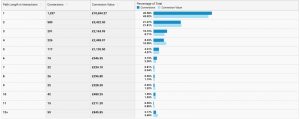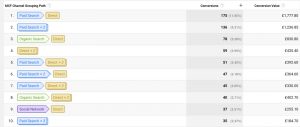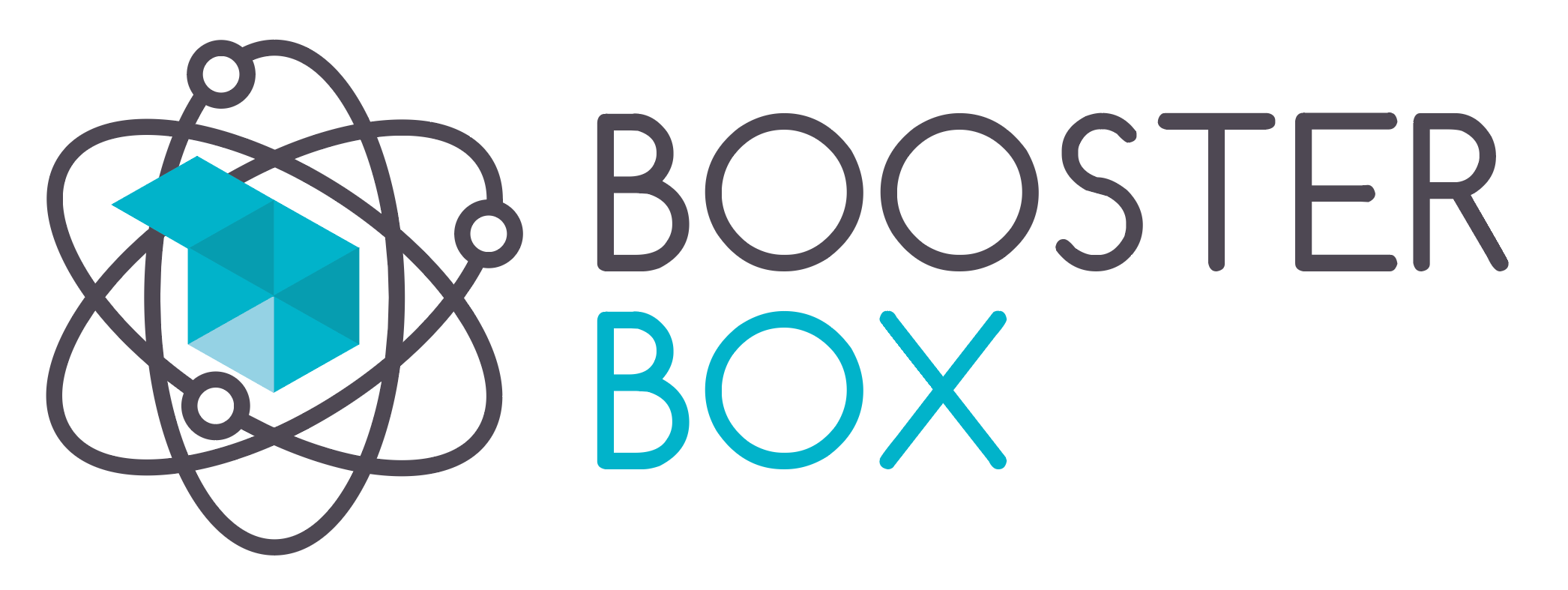Stop gazing into a crystal ball and start building a PPC Acquisition Machine
tl;dr: move from Last Click to Time Decay or Position based.
There is huge debate in PPC Land on Attribution Models, but we all agree on one thing: “Last Click” does not capture the full complexity of the user journey.
As we move towards multi-device users and we spread our media plans across multiple channels, the problem is only getting bigger. Which channels are responsible for driving sales?
What does “Attribution Problem” mean and what is an “Attribution Model” anyway?
Imagine this scenario (credits: this tweet). Last Friday you went to the pub with your colleague Kermit after work. He had a couple of pints, then some wine, then one Sambuca shot. Suddenly he acquired the ability to speak a foreign language and felt his head spinning. What got him drunk? The sambuca (Last Click model) or the first Pint (First Click model). Probably a bit of everything, but it is hard to say exactly. This is an attribution problem and different models are a way to assign weight to each component that is driving a behaviour.
Do you have an attribution problem? Yep
You don’t believe me?! Let me convince you with some numbers. Check it for yourself: In Google Analytics, search for the “Path Length” report.
It tells you how long, in terms of interactions (or days), it takes for a user to finally make a transaction. Most likely you’ll see that a large portion of conversions are happening after more than one interaction.

Another way to see this is the “Top Conversion Path” report.
It shows all of the unique sequences of channel interactions that led to conversions, as well as the number and value of conversions from each path. In other words, it allows you to see how channels interact along your conversion paths. Most likely you will see that Direct tends to be a “Closing” channel: users will start to visit your site from another channel then buy your product coming from “Direct”

In a nutshell. Most likely you will see that many of your users are visiting your site multiple times, probably from different channels, before buying your product.
What are your options?
This article from Avinash Kaushik gives you the full picture. Below you can find a summary of the options available:
- In the Last Interaction attribution model, the last touchpoint would receive 100% of the credit for the sale.
- In the Last Non-Direct attribution model all direct traffic is ignored, and 100% of the credit for the sale goes to the last channel that the customer clicked through from before converting.
- In the Last AdWords Click attribution model, the last AdWords click would receive 100% of the credit for the sale.
- In the First Interaction attribution model, the first touchpoint would receive 100% of the credit for the sale.
- In the Linear attribution model, each touchpoint in the conversion path would share equal credit (25% each) for the sale.
- In the Time Decay attribution model, the touchpoints closest in time to the sale or conversion get most of the credit.
- In the Position Based attribution model, 40% credit is assigned to each the first and last interaction, and the remaining 20% credit is distributed evenly to the middle interactions.
A simplified approach?
At Booster Box, we like to solve complex problems for large PPC operations. When approaching the Attribution Problem, we have consistently found that a customised model is the most reliable solution in the long run.
In the short term, most of the advertisers still operating with Last Click attribution can probably dramatically benefit from switching to Position Based and Time Decay attribution. These two models dramatically help advertisers create a better picture of where they should put their money online.

